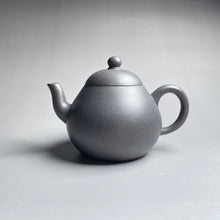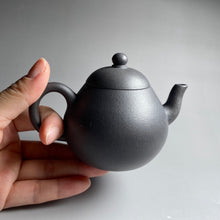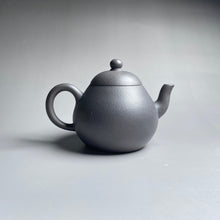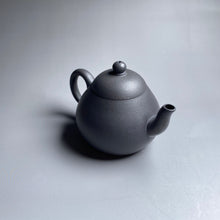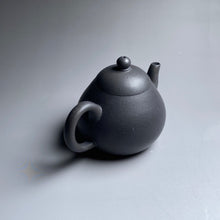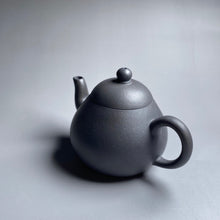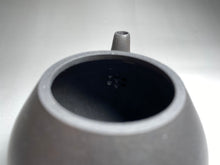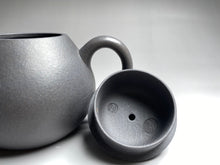
Capacity: Approximately 160ml
This grey wuhui Yixing teapot is produced by firing original ore huangjin duan clay in a low oxygen environment in the kiln. This teapot was fired 4 times in a reduction environment to achieve its silver-grey appearance. Reduction fired huangjin duan appears grey. The clay has the same properties as huangjin duan fired in oxidation firing, but appears silver-grey instead of golden yellow.
Firing a teapot in a low-oxygen environment is called “wuhui” 焐灰 which can be loosely translated as “smother with ash to fire.” The teapot is stuffed with dry rice straw, placed in a clay box and surrounded with more rice straw before being covered. When it is fired in this way, the straw uses the oxygen when it burns to ash, reducing the oxygen in the clay box while the teapot is being fired. This creates the reduced oxygen environment that gives the clay its black appearance.
This Yixing Teapot is made from Original Ore Huangjin Duan 原矿黄金段. The clay has a rich golden colour, giving it the name "Huangjin," meaning gold in Chinese. Like all of our Yixing clay, this is made of original ore, meaning the Yixing clay was processed without adding other clays or pigments. Huangjin duan is a rarer type of duanni. Like other duanni, huangjin duan is favoured for rounding out the harsher notes of some teas. It is very porous compared to other zisha and is better at retaining heat.
You can read more about Huangjin Duan and the other types of duanni in our article here.
This pear shape teapot was made by Lin Hanpeng and Chen Chunhong Studio. This pot is known as "half-handmade" as the sculptor uses a molding tool to shape the body, and uses his hands for the handle, spout, holes, and smoothing out the body. In fact, no machine was used in it's shaping as the use of the tool is entirely manual.
You can read more about half handmade teapots in our blog entry here.
Preparation Before Use
Yixing Teapots should be prepared before using the first time. This is called "opening the pot". It removes the dust from firing the teapot.
We recommend rinsing the teapot under warm water two or three times, then filling the teapot with boiling water and emptying it out two to three times. After this the teapot is ready for use.









